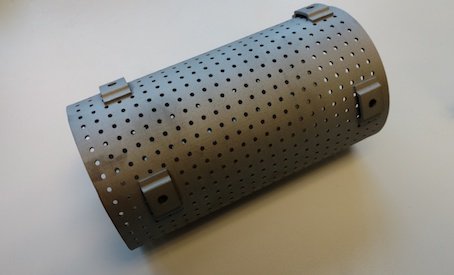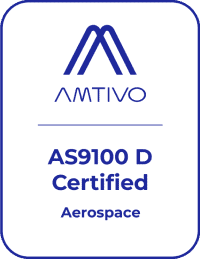Spin Testing Additively Manufactured or 3D-Printed Parts
Leave a CommentAdditive manufacturing (AM) is the process of building 3D workpieces layer by layer. Rather than traditional processes such as machining, which create forms by removing the material from stock material, additive manufacturing “prints” layers into a part from a computer model created with Computer Aided Design (CAD) software.
The AM technique has been around for some time. With recent advancements in technology, it has been gaining more popularity and relevance. The AM techniques are also known as:
- 3D Printing
- Rapid Prototyping (RP)
- Direct Digital Manufacturing (DDM)
- Layered Manufacturing
- Additive Fabrication

With the ongoing improvement on the quality of parts made with AM method, it is also becoming increasingly cost-effective. Many industry leaders believe that AM will soon become an integral part of new products and future manufacturing processes. AM technology is in the midst of a revolution, and manufacturers continue to see new benefits from new methods as they enter the market.
Why 3D Print High-Speed Rotor Parts?
Leading turbomachine OEMs are looking into a possibility of additively manufacturing high-speed rotor parts. Within the AM technologies for printing metal parts, one of the immediate areas of application for the AM parts is the replacement of (or enhancement of) traditionally cast parts.
There remain many challenges ahead of where we are today. Many manufacturers have begun to weigh the benefits of additively manufacturing the rotors with airfoils, cooling channels, and many intricate features. The potential benefits of AM for OEMs include:
- Equivalent or stronger than min-property cast parts
- Consolidation of multiple parts – Reduced manufacturing cost
- Enabling new designs which cannot be made with traditional manufacturing techniques

GE and other industry leaders have waylaid some of these concerns by building functional turbine engines using 3D printing. The electron beam from one machine can fabricate many static engine parts, and recent demonstrators showed a possibility to manufacture a blade from titanium aluminide powder, a material so brittle that it could previously only be fabricated using expensive molding processes.
Along with challenges in achieving higher dimensional accuracy and better surface finish, one of the challenges in additively manufacturing a high-speed rotor is that the parts must be reliably made and validated. It is understood that the AM process has not resolved the problems related to internal defects such as material porosity, discontinuity, and directionality.
High-Speed Spin Testing is Critical for Development
Test Devices (TDI) has been spin testing cast rotors for years. With the emergence of additive manufacturing, we are starting to work with some customers to spin test their rotors. High-speed spin tests can be used to stress the parts and verify their structural integrity.
Looking further, TDI is evaluating the benefit of pre-spinning the casted or additively manufactured rotors to achieve the following benefits:
- Stabilizing the material and minimizing the in-operation change in unbalances
- Application of pre-spinning process to the rotors to bake-in advantageous residual stress state
- Improving engine efficiency through controlling the rotor growth behavior and improving tip clearance
Spin Test Additively Manufactured Rotor Parts with Test Devices, Inc.
TDI continues to look into advancing and improving our spin testing technologies and services. We strive to be your “One-stop Shop” and offer comprehensive services to meet your spin testing and manufacturing needs (pre-spin, pre, and post-spin machining, balancing).
TDI offers fully compliant operation in accordance with AS9100/ISO9001 (+ OEM QPR) certified processes, backed by the demonstrated capabilities:
- Handling high-volume loads of 6,000+ units
- Managing 30+ manufacturing spin operations consisting of different parts of varying designs and sizes
- Fast turn-around and guaranteeing high-quality work achieved by in-house inspections/quality assurance, machining, and balancing capabilities
Spin testing can contribute to enhancing the safety and the performance of additively manufactured rotors. Contact TDI today to learn more about spin testing 3D printed parts.




